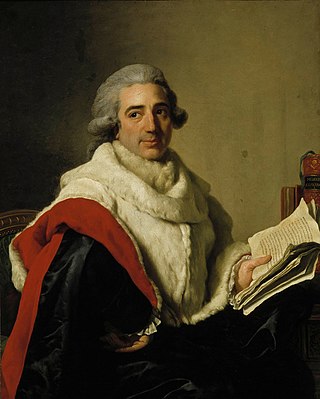Related Research Articles

Château-Thierry is a French commune situated in the department of the Aisne, in the administrative region of Hauts-de-France, and in the historic Province of Champagne.
The year 1787 in science and technology involved some significant events.
The year 1826 in science and technology involved some significant events, listed below.
The year 1829 in science and technology involved some significant events, listed below.
The year 1776 in science and technology involved some significant events.
The year 1749 in science and technology involved some significant events.
The year 1794 in science and technology involved some significant events.
The year 1795 in science and technology involved some significant events.
The year 1793 in science and technology involved some significant events.
The year 1783 in science and technology involved some significant events:
The year 1761 in science and technology involved some significant events, listed below.
The year 1750 in science and technology involved some significant events.
The year 1748 in science and technology involved some significant events.
The year 1739 in science and technology involved some significant events.

Hôpital de la Charité was a hospital in Paris founded by the Brothers Hospitallers of St. John of God in the 17th century. In 1935, it was closed and demolished to make way for the new faculty of medicine. Located at 45, rue des Saints-Pères, the premises currently house the Saints-Pères university centre, one of the sites of the Paris Cité University.
The following lists events that happened during 1794 in the French Republic.
Events from the year 1814 in France.
The Commission des Sciences et des Arts was a French scientific and artistic institute. Established on 16 March 1798, it consisted of 167 members, of which all but 16 joined Napoleon Bonaparte's campaign in Egypt and produced the Description de l'Égypte. More than half were engineers and technicians, including 21 mathematicians, 3 astronomers, 17 civil engineers, 13 naturalists and mining engineers, geographers, 3 gunpowder engineers, 4 architects, 8 artists, 10 mechanical artists, 1 sculptor, 15 interpreters, 10 men of letters, 22 printers in Latin, Greek and Arabic characters. Bonaparte organised his scientific 'corps' like an army, dividing its members into 5 categories and assigning to each member a military rank and a defined military role beyond his scientific function.

Jean-Baptiste Eugénie Dumangin was a French physician known to have participated in the final treatment and autopsy of Louis XVII, the younger son of King Louis XVI and Queen Marie Antoinette. His two favourite fields were therapeutics and hygiene.
References
- ↑ "C/1743 X1". JPL Small-Body Database Browser. Jet Propulsion Laboratory. 1744-03-01. Retrieved 2011-10-13.
- ↑ Anglesea, Martyn (2004). "Drury , Susanna (b. 1698?, d. in or after 1770)". Oxford Dictionary of National Biography . Oxford University Press. doi:10.1093/ref:odnb/59673 . Retrieved 2012-11-16.(subscription or UK public library membership required)
- ↑ Euler, L. (1744). "Methodus inveniendi lineas curvas maximi minimive proprietate gaudentes". In Opera omniaI p. 24.
- ↑ "Northampton General Hospital". Northamptonshire Heritage. Archived from the original on 2019-11-16. Retrieved 2019-11-16.
- ↑ "Copley Medal | British scientific award". Encyclopedia Britannica. Retrieved 21 July 2020.
- ↑ Corlieu, Auguste (1901). "Le docteur Dumangin de Château-Thierry et le cœur de Louis XVII". Annales de la Société historique et archéologique de Château-Thierry (in French): 103–107.